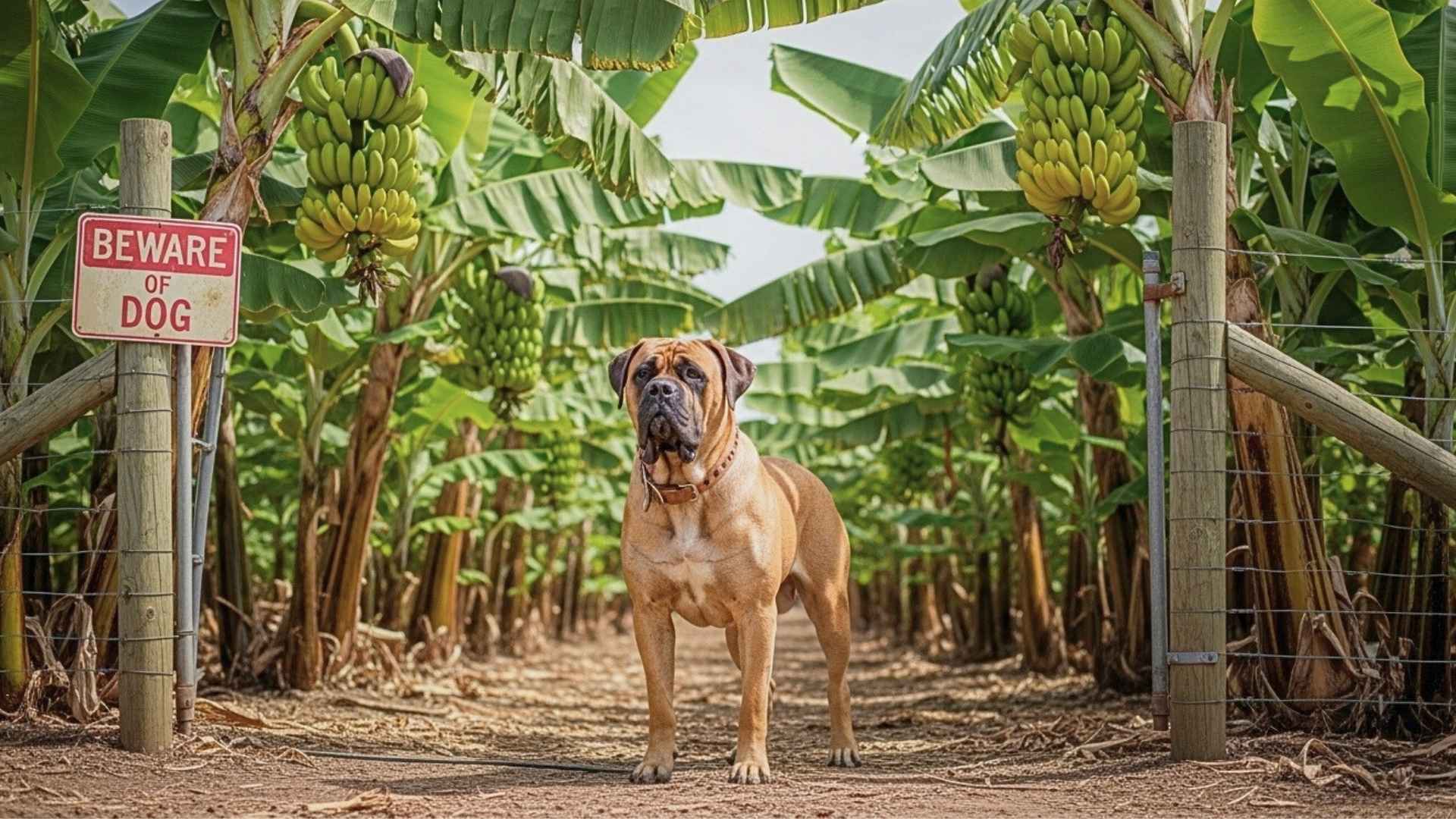Banana farms in many tropical regions face an unexpected challenge: monkeys raiding the fruit before it’s harvested. Farmers turn to certain dog breeds to help protect their crops, relying on dogs with the instincts, size, and vigilance to keep wildlife at bay.
These are not just pets, they are working partners that patrol fields, guard orchard edges, and respond instantly when something threatens the harvest. Some of these breeds have centuries of experience guarding livestock on remote hillsides, while others come from herding backgrounds that taught them to watch, move, and act.
Together, they share a mix of awareness, strength, and independence that makes them suited for long days outdoors. For farmers, the right dog can mean the difference between constant loss and a secure, well‑guarded farm, where the harvest reaches the market instead of becoming a feast for opportunistic monkeys.
Dog Breeds That Guard Banana Farms From Monkeys
1. Kangal
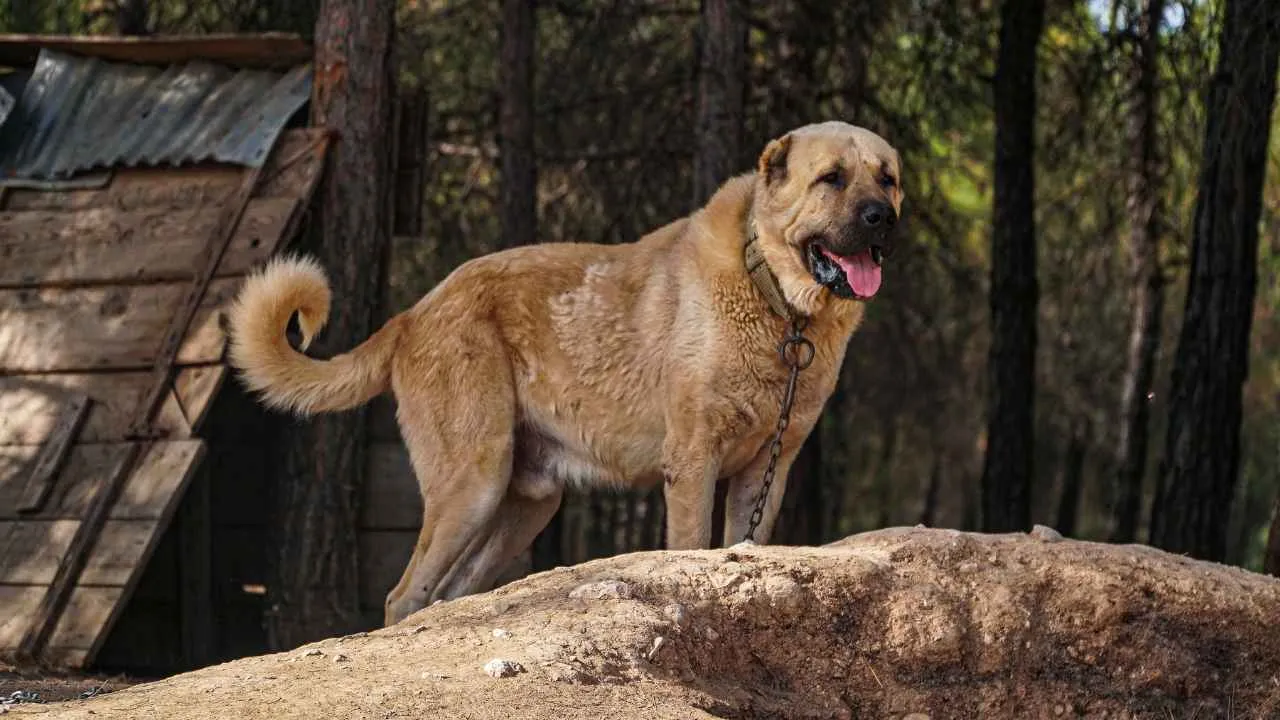
This Turkish guardian, towering 28–32 inches tall and weighing as much as 150 pounds, was bred to guard sheep from wolves and jackals on the Sivas plains. That same imposing stature makes wildlife hesitate around farms, including monkeys that might otherwise raid crops.
They quietly scan the horizon, conserving their strength, stepping forward only when something breaches their perimeter. Farmers value that judgment because it means the dog intervenes only when necessary.
They are independent thinkers, but that independence doesn’t mean they resist direction. Purina states that Kangals need early training to learn farm boundaries, and they respond best to handlers who lead with experience and confidence. Once they know what’s theirs to guard, they make decisions on their own, and those decisions are usually the right ones.
Their short, dense double coat in fawn or gray sheds year‑round and needs steady brushing, but it also shields them from insects and weather.
Quick Tips
Introduce them to farm boundaries early—they’ll remember them for life.
Let them patrol independently; they thrive when trusted.
Keep fencing clear of obstructions—they’ll create their own “lines” to protect.
2. Maremma Sheepdog
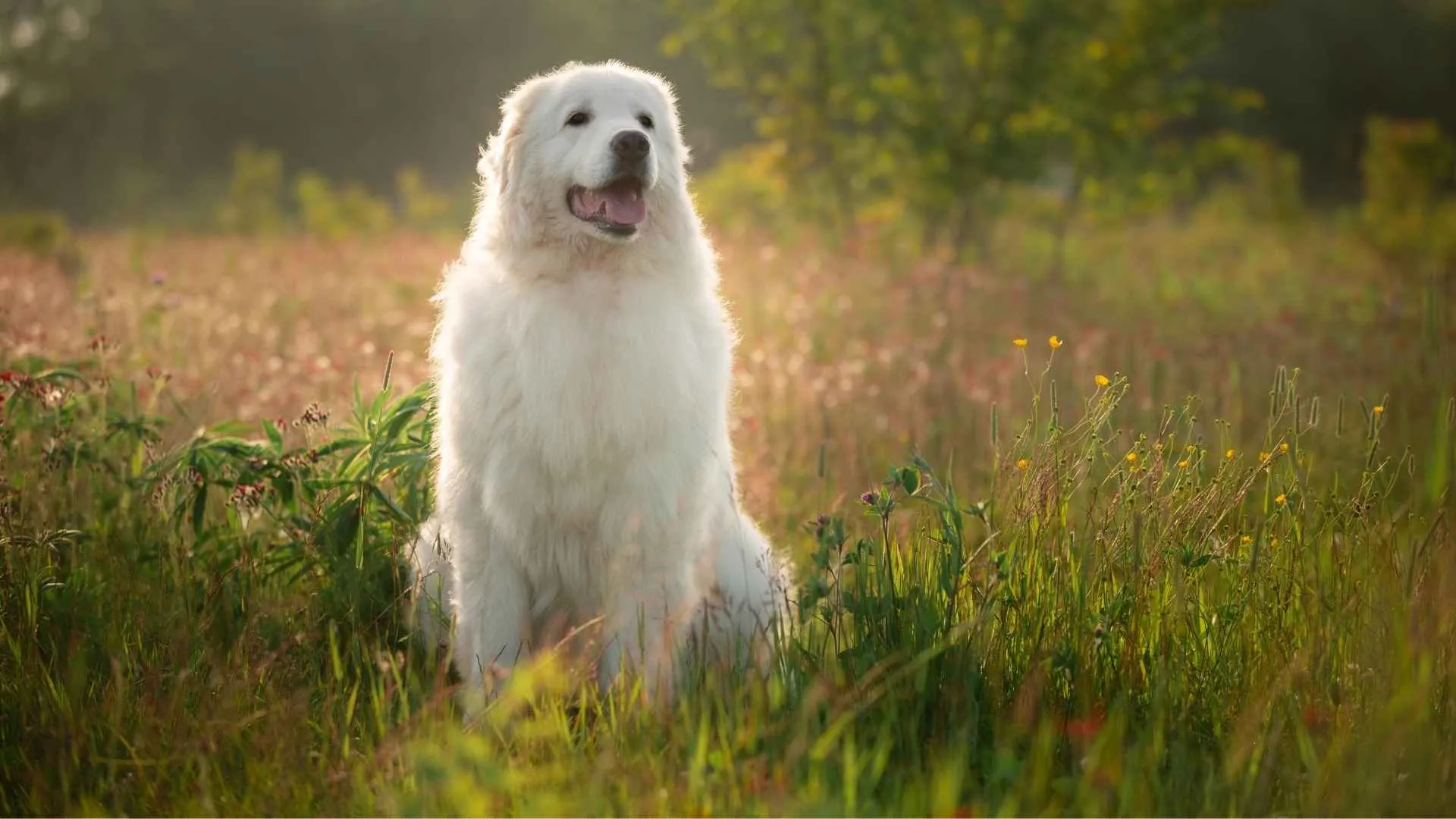
The Maremma Sheepdog doesn’t just guard—it settles into its role like part of the landscape. Bred in Italy’s Abruzzo region to live with sheep, these dogs aren’t loud or showy. Their strength is in their steady presence, which changes animal behavior before a conflict even begins.
They blend into their surroundings, whether that’s a flock of sheep or a field of fruit trees. The white coat, long and woolly, was meant to mirror the livestock they once lived among. That coat still offers protection from insects and weather, but needs brushing several times a week, especially during shedding seasons.
Maremmas don’t need constant commands. They prefer trust and a steady routine, and they figure out their work by observing. Training works best when they’re young, with early exposure to the farm environment—they’ll “adopt” the land and protect it without reminders.
Their guarding style is calm. A Maremma doesn’t bark at everything; it stands still and watches, and that stillness alone keeps monkeys and other wildlife at bay.
Quick Tips
Give them shaded lookout spots—they like to see everything.
Allow them some independence; over‑handling makes them restless.
Start early with gentle introductions to fields and livestock.
3. Anatolian Shepherd Dog
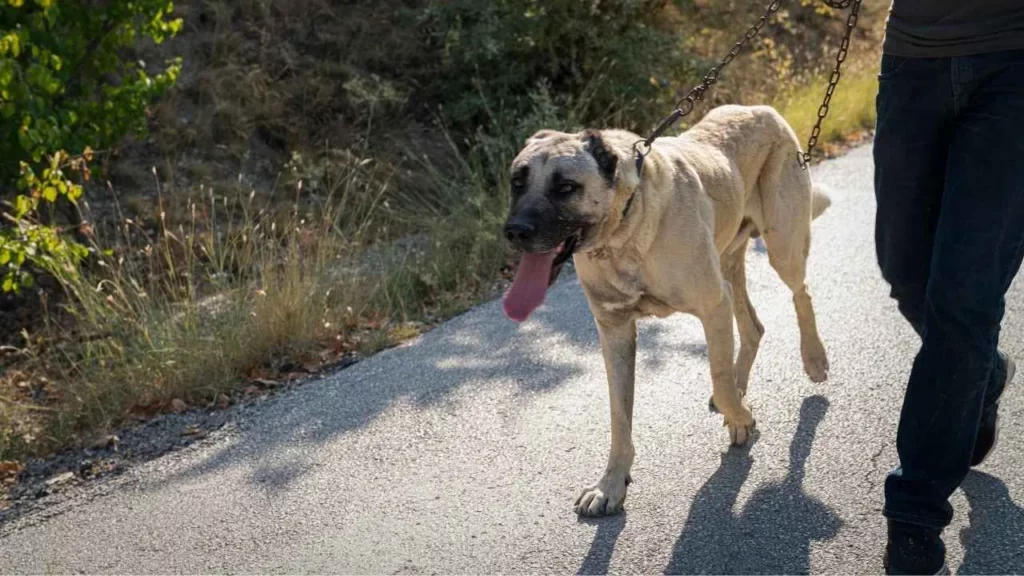
As per PetMD, the Anatolian Shepherd developed on Turkey’s vast, windswept plateaus, where it guarded flocks across miles of open land. That heritage created a dog that is calm under pressure and willing to make decisions on its own, qualities that make it valuable on farms where constant human supervision isn’t possible.
Anatolians aren’t loud or excitable. They stand quietly at the edges of their territory, eyes moving, waiting for a reason to act. When monkeys or other wildlife appear, they don’t rush blindly—they step forward with confidence and claim the space.
These dogs are smart, but their intelligence means they don’t just follow orders by habit. They do best when training and socialization start early, giving them boundaries and trust. Heavy‑handed handling doesn’t work; steady leadership does. Once they understand their role, they rarely need correction.
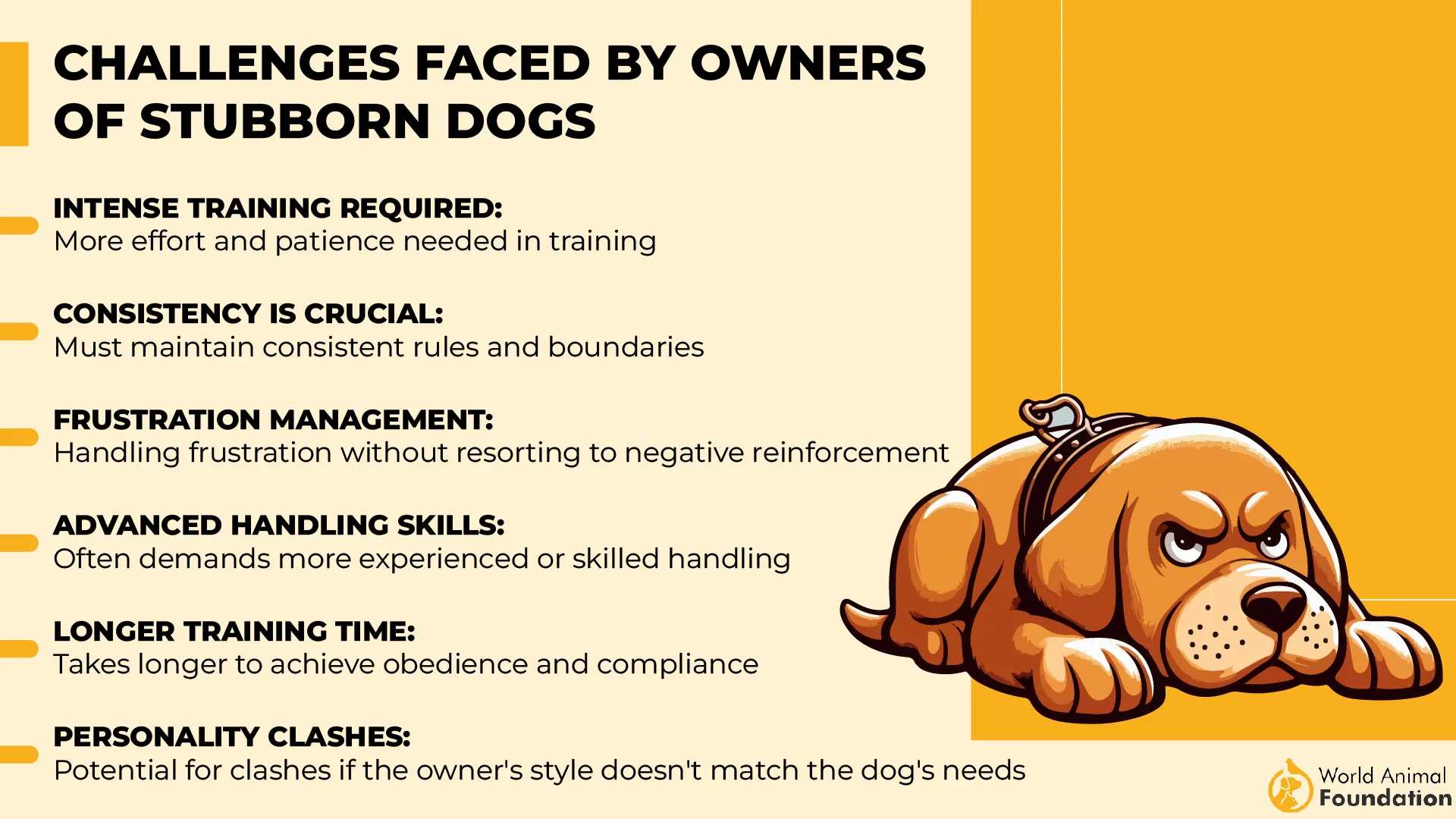
Their short coat comes in fawn, brindle, or cream, and needs weekly brushing. Built to withstand heat and rough weather, they thrive in tropical farm conditions with minimal care.
Quick Tips
Establish clear patrol paths—they’ll stick to them naturally.
Pair them with another farm dog for broader coverage.
Teach visitor recognition early—they’ll remember who belongs.
4. Caucasian Shepherd
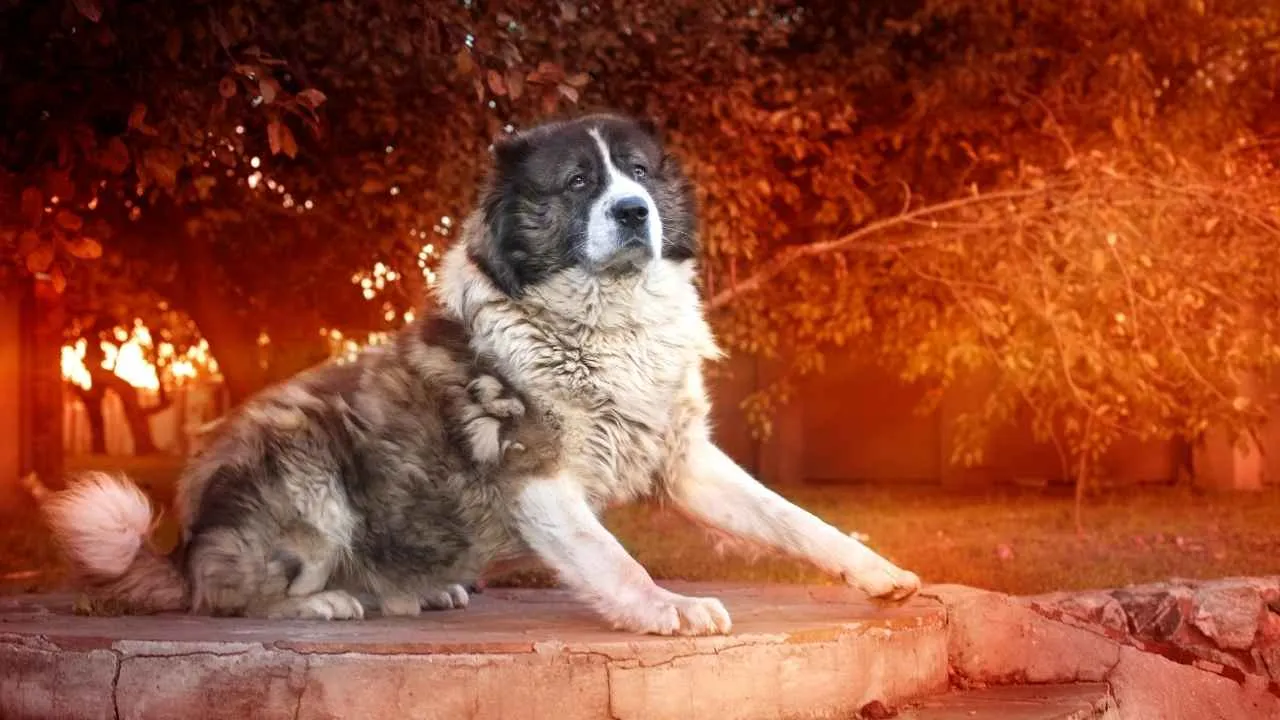
The Caucasian Shepherd is a wall of muscle and fur, bred in the Caucasus Mountains to stand off wolves and bears. Their size—often over 120 pounds—is enough to make most animals stop before they ever cross a boundary.
They don’t sprint around the farm. They settle into a spot, watch, and let their sheer presence hold the line. When something crosses into their zone, they respond decisively, and few creatures argue with them.
Training these dogs isn’t about endless commands. It’s about showing them early what they’re meant to protect, who is part of the farm, and who isn’t. With that foundation, they hold their post without needing constant input.
Their thick double coat needs attention—especially around orchards where burrs and debris can tangle—but it also protects against harsh weather and biting insects.
Quick Tips
Give them a vantage point—they prefer to watch from higher ground.
Keep introductions structured—they guard those they know and distrust those they don’t.
Maintain open boundaries—they’ll patrol clear lines best.
5. Border Collie

The Border Collie wasn’t bred for guarding—it was bred to move sheep with unmatched intelligence and speed. But those same qualities make it one of the most useful farm dogs in the world, including on banana farms.
A Border Collie notices everything, from the rustle of leaves to the shadow of a monkey in the trees, and reacts instantly. They are truly alert at all times.
According to the AKC, they learn faster than nearly any breed. But because they’re so sharp, they need tasks that engage their minds, or they’ll invent their own “jobs,” which might mean jumping fences or herding things that don’t need herding.
Their coat, whether rough or smooth, needs regular brushing to keep burrs and dirt from orchard fields out of their fur.
Quick Tips
Use their energy—alternate patrol with play to keep them sharp.
Teach clear “inside” and “outside” zones—they learn boundaries quickly.
Expect deterrence through motion, not intimidation—they chase more than they stare down.
6. Australian Cattle Dog
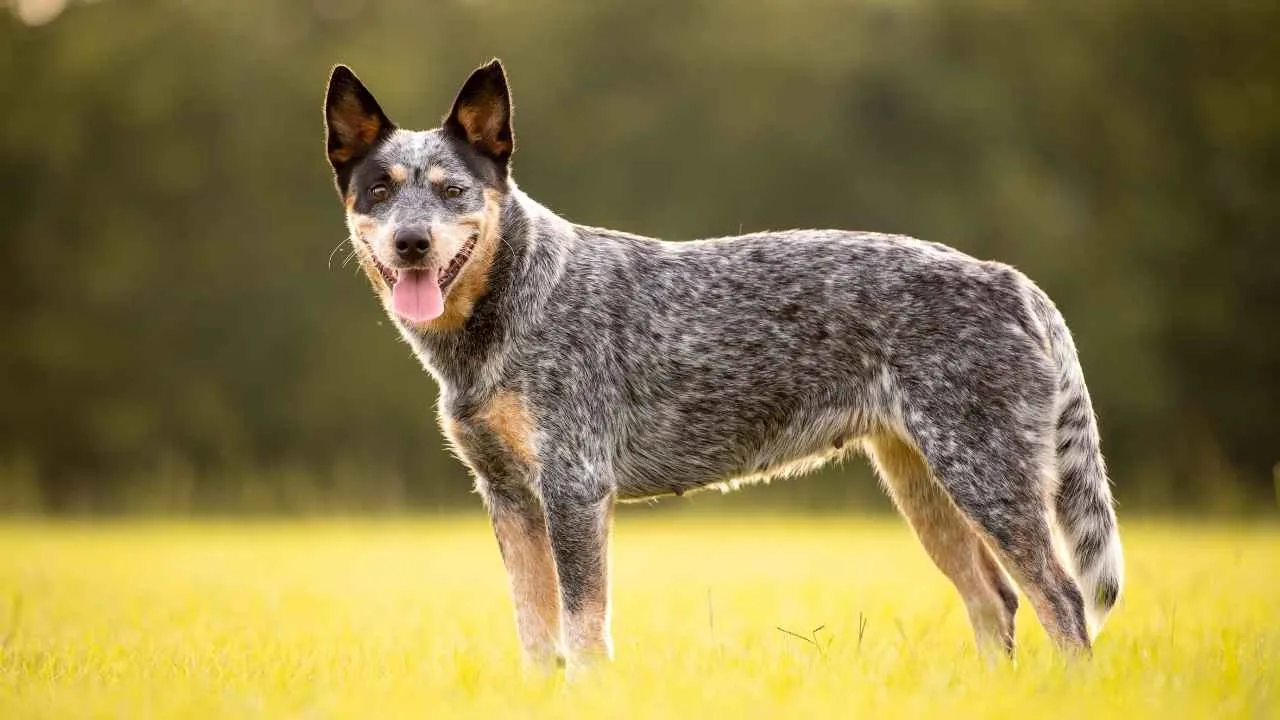
The Australian Cattle Dog, known as the Blue Heeler or Red Heeler, was created to move stubborn cattle across rough country. That grit carries over into farm guarding—this is a dog that doesn’t quit easily and doesn’t ignore movement on its watch.
Heelers are all focused when they’re working. They sweep along fence lines, dart into orchards, and push back against anything they see as out of place. Their smaller size, around 35–50 pounds, doesn’t stop them from holding ground with sheer determination.
Training them is less about teaching obedience and more about giving them structure. They thrive on jobs—patrol this route, hold this gate, alert here. Without direction, they’ll make up their own work, and it might not be what you intended.
Their short, dense coat sheds year‑round but requires only quick brushing. Tough skin and hardy fur keep them comfortable as they sprint through brush and fields.
Quick Tips
Assign daily “loops” or paths—they love predictable routines.
Provide mental challenges; a bored Heeler can turn destructive.
Reinforce calm behavior at gates—they shouldn’t overreact to farm workers.
7. Tibetan Mastiff
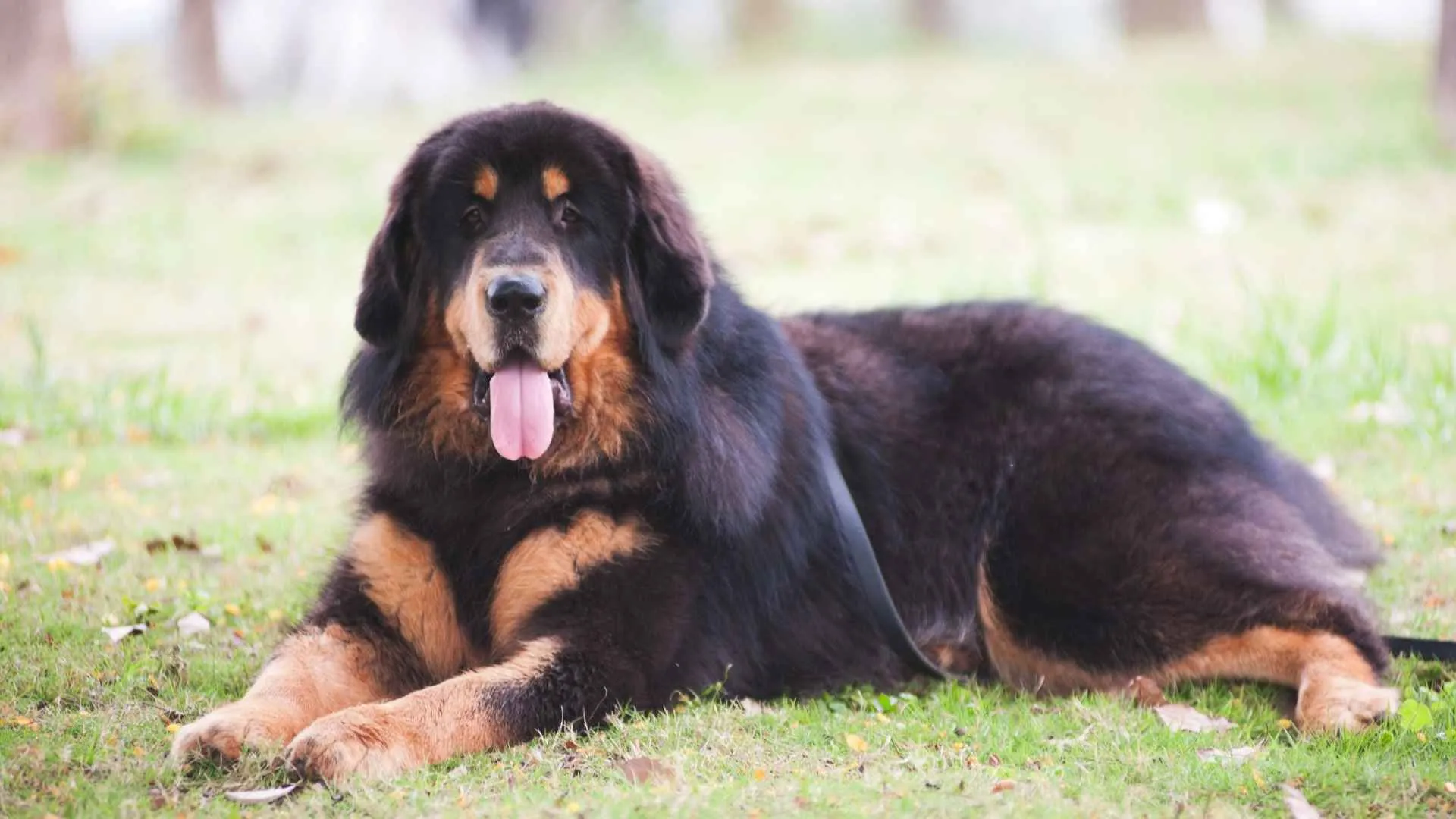
The Tibetan Mastiff is an ancient guardian, bred in the Himalayan highlands to protect herds and monasteries. They’re not restless workers—they hold ground with a kind of heavy calm, and when they move, they mean it.
These dogs are more night sentinels than daytime patrol dogs. When darkness falls, their deep, echoing bark becomes a warning that carries across the farm. By day, they’re often content to watch quietly from a shaded spot, saving their energy for when it counts.
Training a Tibetan Mastiff requires early effort. They don’t respond well to force, but they respect calm, steady guidance. Once they accept a farm as theirs, their loyalty is unshakable, and they’ll protect without constant reminders.
Their thick double coat sheds in waves each season, but it provides a barrier against weather, pests, and even sharp branches. Regular brushing keeps it manageable in orchard environments.
Quick Tips
Use their night watch instincts—they’re most vigilant after sunset.
Give them a clear, quiet base area; they guard best from a settled spot.
Early socialization is key—they must know who belongs on the farm and who doesn’t.
Conclusion
In regions where banana farms border urban areas, farmers face increasing pressure from wildlife, including large troops of monkeys. Dogs bred for guarding offer more than simple farm help—they provide services that protect crops, reduce conflict, and support communities. Their ability to deter raids without constant human presence gives farmers space to focus on the harvest rather than the next attack.
Their calm authority works even when they are simply standing watch, and their instincts help manage the risks of being surrounded by wildlife.
These seven breeds are an example of how humans and dogs can work together to split duties: people cultivate, dogs protect. Together, they keep villagers, crops, and farms safer, quietly shaping daily life.


